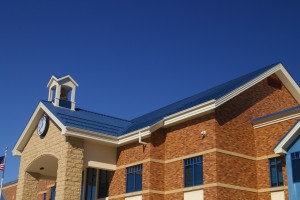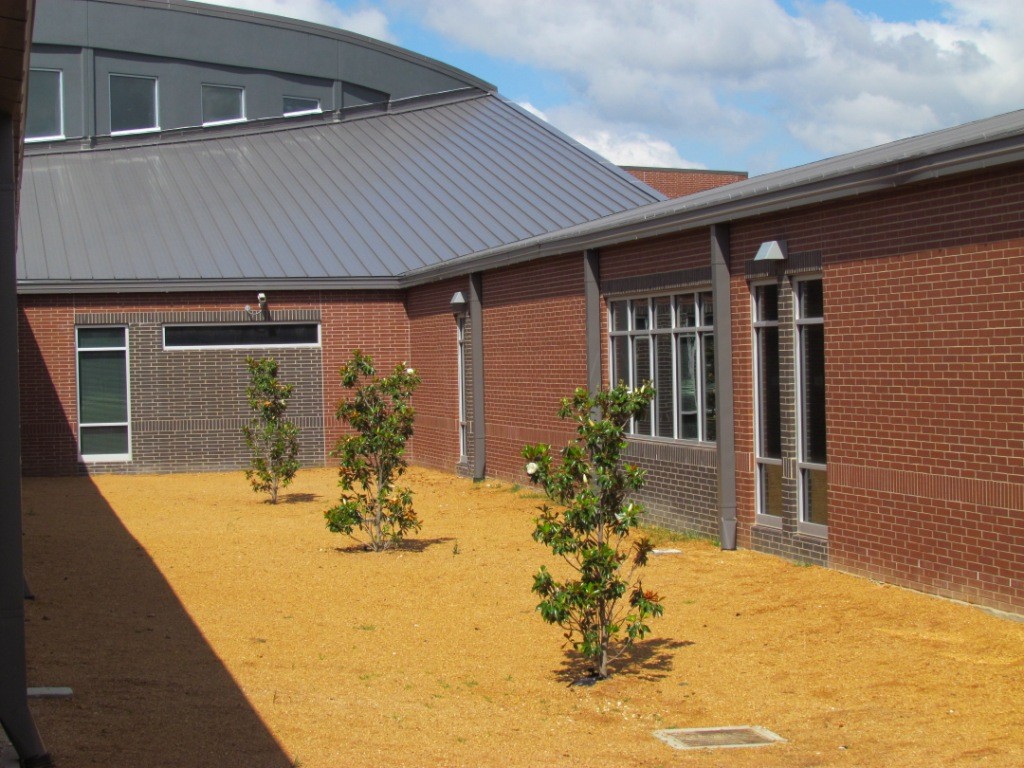
In my previous post, I talked about the important process of selecting the right materials and appurtenances for your standing seam roof system and how they should be used together for the best result. There are three more parts of the standing seam roof system that, if used, must be carefully specified.
Pipe Penetrations. Plumbing vents, heater flues, exhaust fans and pipe supports for equipment racks are all typical penetrations seen on metal roofs. Always specify rubber roof jacks for these penetrations, and use high temperature silicone rubber roof jacks on pipes that will be hot. Do not allow the use of residential type roof jacks, such as those made of plastic or lead, or the EPDM roof jacks made for single ply roofs.
Use pipe instead of square tubing to penetrate the roof when designing an equipment rack for rooftop equipment. Otherwise, there will be no good way to seal it to the roof. Pipe penetrations should always penetrate the roof in the middle, or flat part, of the panel, not through the seam itself. Ignore this advice, and you’ll probably have a roof leak on your hands.
Large diameter pipes may restrict the drainage of water. A good rule of thumb is to ensure that the base of the roof jack fits completely in the pan of the roof panel. If it will not fit, install a stack flashing in the roof at the proper location and attach the roof jack in the stack flashing. Stack flashings install into a roof just like a roof curb, but they are flat in the middle and don’t have the opening a curb does. This provides a large flat area in which to install the roof jack with room for water drainage.
Crickets. The roof design may at times require a cricket be installed to divert water around a parapet wall. And if the specifications or architectural drawings are not clear as to the proper treatment of this area, the roofer will make the cricket out of sheet metal. However, crickets should always be made out of welded aluminum or stainless steel. This allows you to have a cricket that fits and leaves no pinholes or laps that are sealed with caulk. Sunlight will eventually break down exposed caulk and may cause a leak. But when properly built and installed, a welded cricket will perform throughout the lifetime of the roof.
Snow Retention Devices. When these devices are required on a standing seam roof, never use a through-fastened device. When through-fastened devices are used, they are either installed into the secondary structural, which prevents the roof from floating, or they are installed into the roof panels only, which makes for a very weak connection that will eventually work loose, leaving holes in the roof.
The best snow retention devices utilize a clamp that locks onto the panel seam and does not perforate the roof membrane.
Keep in mind that if snow conditions are severe enough to warrant retention devices at the eave, you will also need to protect pipe penetrations as well. Many unprotected plumbing vents are broken at the roof surface from moving ice and snow.
Remember, the roof system is called a system for a reason. For a successful roof installation, all rooftop accessories should be considered. Well defined specifications and details should be provided and adhered to so everyone involved in the project knows what is expected and can bid the project accordingly.
The roof installation process will be more efficient, leak problems will be avoided and the “final inspection” will be painless. Who doesn’t want that? The end result will be a total roof system that looks good and performs well for decades to come.
